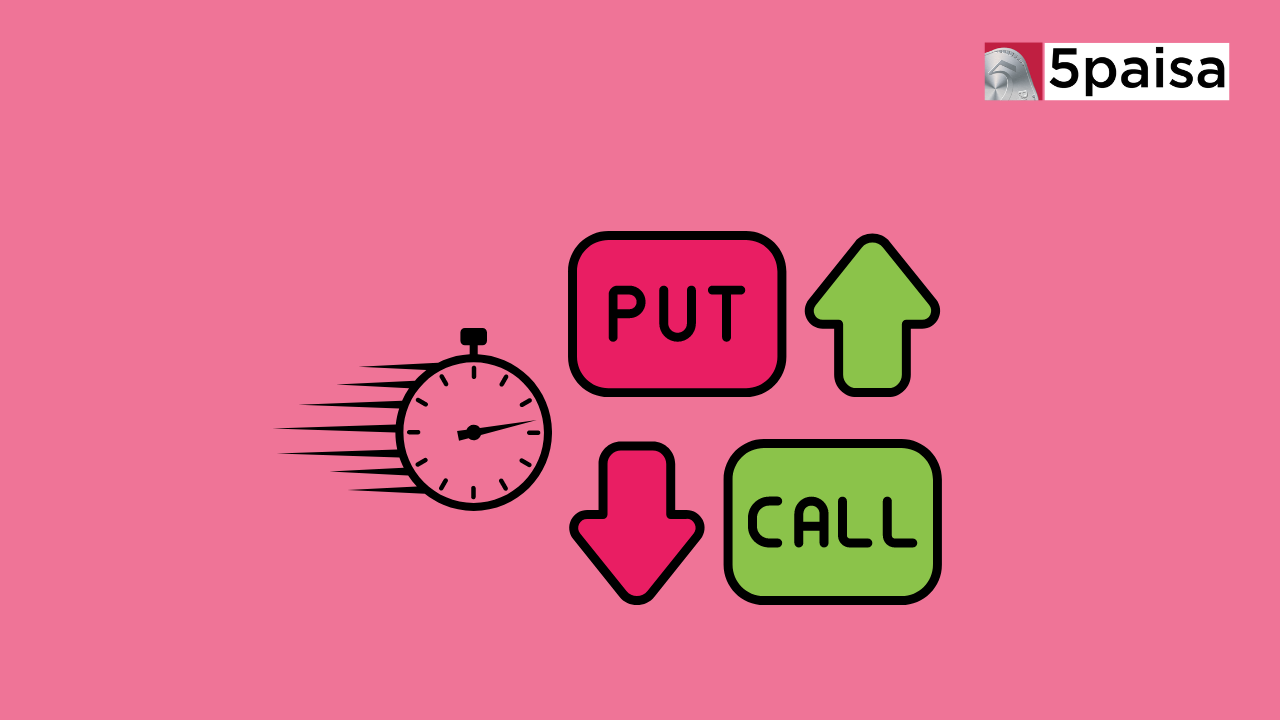Short Put Options Trading Strategy

Last Updated: 8th July 2024 - 12:31 pm
What is short put option strategy?
A short put is the opposite of buy put option. With this option trading strategy, you are obliged to buy the underlying security at a fixed price in the future. This option trading strategy has a low profit potential if the stock trades above the strike price and exposed to high risk if stock goes down. It is also helpful when you expect implied volatility to fall, that will decrease the price of the option you sold.
When to initiate a short put?
A short put is best used when you expect the underlying asset to rise moderately. It would still benefit if the underlying asset remains at the same level, because the time decay factor will always be in your favour as the time value of put will reduce over a period of time as you reach near to expiry. This is a good option trading strategy to use because it gives you upfront credit, which will help to somewhat offset the margin.
| Strategy | Short Put Option |
|---|---|
| Market Outlook | Bullish or Neutral |
| Breakeven at expiry | Strike price - Premium received |
| Risk | Unlimited |
| Reward | Limited to premium received |
| Margin required | Yes |
Let’s try to understand with an Example:
| Current Nifty Price | 8300 |
| Strike price | 8200 |
| Premium received (per share) | 80 |
|---|---|
| BEP (strike Price - Premium paid) | 8120 |
| Lot size | 75 |
Suppose Nifty is trading at Rs. 8300. A put option contract with a strike price of 8200 is trading at Rs. 80. If you expect that the price of Nifty will surge in the coming weeks, so you will sell 8200 strike and receive upfront profit of Rs. 6,000 (75*80). This transaction will result in net credit because you will receive the money in your broking account for writing the put option. This will be the maximum amount that you will gain if the option expires worthless. If the market moves against you, then you should have a stop loss based on your risk appetite to avoid unlimited loss.
So, as expected, if Nifty Increases to 8400 or higher by expiration, the options will be out of the money at expiration and therefore expire worthless. You will not have any further liability and amount of Rs. 6000 (75*80) will be your maximum profit. If Nifty goes against your expectation and falls to 7800 then the loss would be amount to Rs. 24000 (75*320). Following is the payoff schedule assuming different scenarios of expiry. For the ease of understanding, we did not take into account commission charges and Margin.
Analysis of Short Put Option Trading Strategy
A short put options trading strategy can help in generating regular income in a rising or sideways market but it does carry significant risk and it is not suitable for beginner traders. It’s also not a good strategy to use if you expect underlying assets to rise quickly in a short period of time; instead one should try long call trade strategy.
Objectives Of A Short Put Strategy
The primary objectives of implementing a short-put strategy are:
1. Income Generation: Traders collect premiums by selling put options, which can provide a steady income stream if managed properly.
2. Stock Acquisition: It allows traders to buy stocks at a lower price than the current market value.
3. Leverage: Traders can control a larger number of shares with less capital compared to outright stock purchases.
4. Portfolio Enhancement: This can be used to enhance overall portfolio returns when combined with other strategies.
Mechanics of a Short Put Strategy:
● Sell a put option on a stock you're willing to buy.
● Collect the premium upfront.
● Keep the full premium if the stock price stays above the strike price at expiration.
● If the stock price falls below the strike price, you may be obligated to buy the stock at the strike price.
Risks And Considerations Of Short Put Option Strategy
While the short-put strategy can be profitable, it comes with several risks and considerations:
1. Limited Profit Potential: The maximum profit is limited to the premium received.
2. Substantial Loss Potential: Losses can be substantial if the stock price falls significantly below the strike price.
3. Margin Requirements: Writing put options typically requires a margin account with sufficient funds.
4. Assignment Risk: There's always a risk of being assigned the stock if it falls below the strike price.
5. Opportunity Cost: If the stock price rises significantly, you miss out on potential gains beyond the premium received.
6. Market Risk: General market downturns can negatively impact the strategy.
7. Volatility Risk: Changes in implied volatility can affect option prices and strategy profitability.
Conclusion
The short put options trading strategy can be a valuable tool for generating income, acquiring stocks at lower prices, leveraging capital, and enhancing portfolio returns. By selling put options, traders collect premiums that can provide a steady income stream if managed well. However, it is crucial to understand the risks involved, such as potential significant losses, margin requirements, and assignment risks. Combining short put strategies with other options can help manage risks and increase profit potential. Beginners should approach this strategy cautiously, understand options trading, and practice with simulated accounts before committing to real capital.
Frequently Asked Questions
How Is Profit Determined In A Short Put Strategy?
Can A Short Put Options Strategy Be Combined With Other Options Strategies?
Is A Short Put Strategy Suitable For Beginners?
- Flat ₹20 Brokerage
- Next-gen Trading
- Advance Charting
- Actionable Ideas
Trending on 5paisa
Futures and Options Related Articles
Disclaimer: Investment in securities market are subject to market risks, read all the related documents carefully before investing. For detailed disclaimer please Click here.
 5paisa Research Team
5paisa Research Team
 Sachin Gupta
Sachin Gupta




